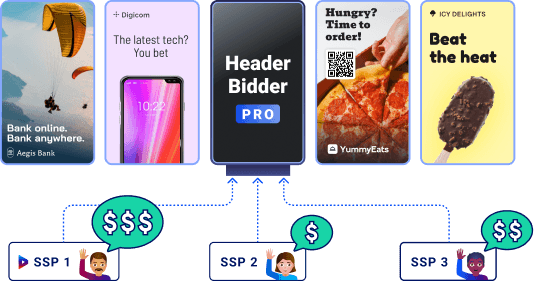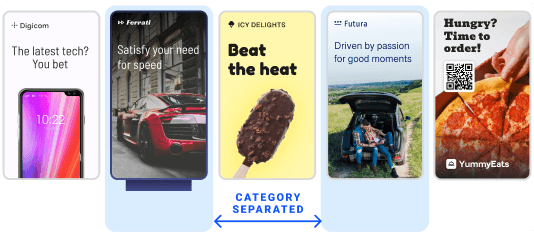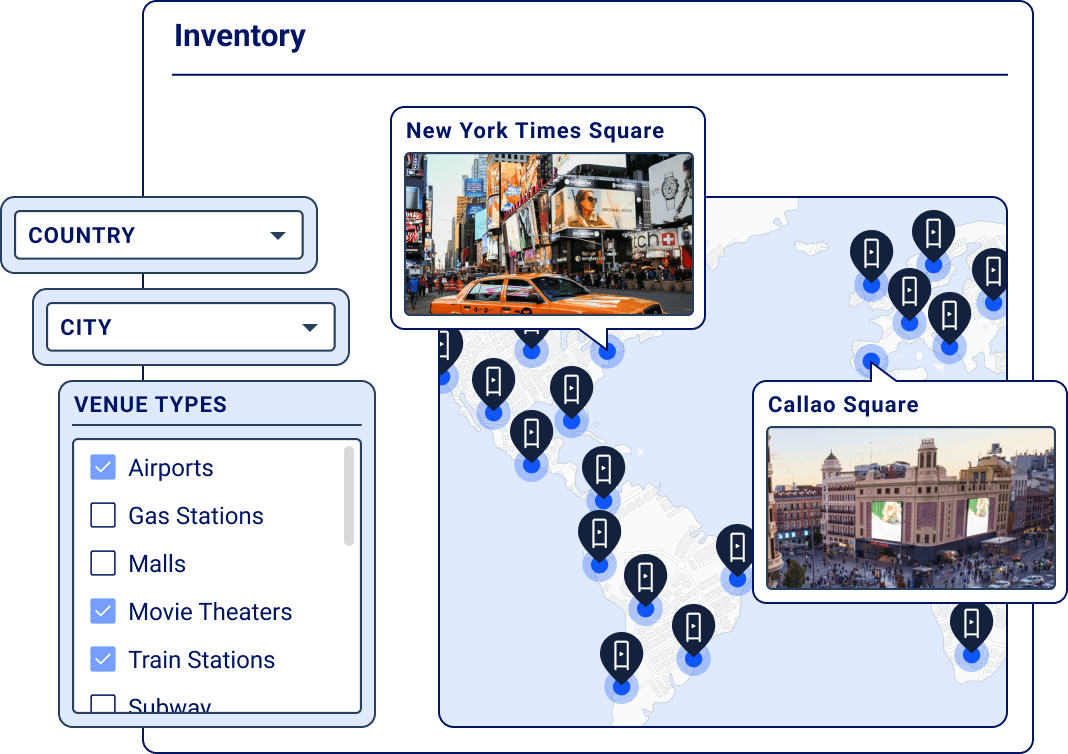Global Programmatic SSP
Drive more revenue with the smartest SSP for OOH
Our supply-side platform connects your out-of-home inventory to buyers from across the globe.
Introducing Broadsign's AI Assistant
Powering programmatic success for leading DOOH networks around the world
Programmatic Header Bidder
Maximize revenue with Broadsign Header Bidder Pro
Harness the power of price-based auctions to guarantee the highest bids, regardless of the SSP. Consolidate your programmatic demand and eliminate the need for multiple platforms. Provide your clients with robust brand safety features and avoid conflicting ad placements.

Extended Brand Safety
Build trust with your buyers by preventing conflicting ad placements
Extend brand safety capabilities to your programmatic campaigns, reassuring advertisers that their campaigns always play in the most secure and accurate placement. What’s more, if you work with multiple providers, you can apply this to demand coming from all your SSP partners.

Detailed Campaign Reporting
Get full visibility into your network’s programmatic performance
Analyze and grow your programmatic sales more effectively with detailed inventory, Floor CPM, and bidding information relating to every deal your network transacts through.
Global Programmatic Network
Open your network to the biggest media buys
Your screens are just what media buyers are looking for. By adding them to our SSP’s listings, you’ll increase your inventory’s exposure and become a contender for big ad campaigns spanning many different media owners worldwide.

The SSP that connects you with the most demand sources
The Broadsign SSP is connected to more DSP partners than any other out-of-home SSP. Connect your inventory to put your screens in front of buyers across more than 30 of the largest DSPs worldwide.
FAQs
How many DSPs do you connect with?
Broadsign SSP is connected with over 30 DSPs with automated API integrations. This is continuously growing, and we are always open to working with any new DSPs.
Does Broadsign's SSP support PMPs?
Absolutely. PMPs through our platform are incredibly flexible, allowing you to target one specific advertiser, or many demand sources, depending on your needs.
Does Broadign's SSP support Open Exchange?
Absolutely. So long as your screen information is updated with pricing, your inventory will be available to all DSPs that support Open Exchange.
How do I connect to Broadsign's SSP?
For existing Broadsign customers, you can rely on the native integration between our content and network management solution and our SSP. Other integration methods exist and are used for networks running on other platforms.
How much money can I expect from Broadsign's SSP?
Programmatic revenue can be different depending on a large number of variables. Reach out and our sales team will work with you to come up with a likely revenue estimate for your network.
Does Broadsign offer a header bidder?
The Broadsign Reach Header Bidder is indeed available for our customers connected to multiple SSPs. This allows publishers to consolidate their programmatic scheduling into one slot, driving up the value of their inventory. For more information, For more information, check out this blog post!
How many agencies/brands transact on Broadsign's SSP?
Over a thousand advertisers use the Broadsign SSP to deliver their messages to screens around the world.
What are the benefits of programmatic vs direct sales?
Programmatic is all about automation. While it shouldn't eliminate your direct sales, it can provide you with tools to complement those sales with automated auctions for any other available inventory. Combined with full-stack Broadsign features like brand safety and pre-emptible campaigns, you can open up a new revenue stream safely and reliably with Broadsign Reach.
Discover what we can do for your network
Get in touch with us and a member of our team will reach out as soon as possible to set up a call. Please let us know if there are any questions you would like to discuss.